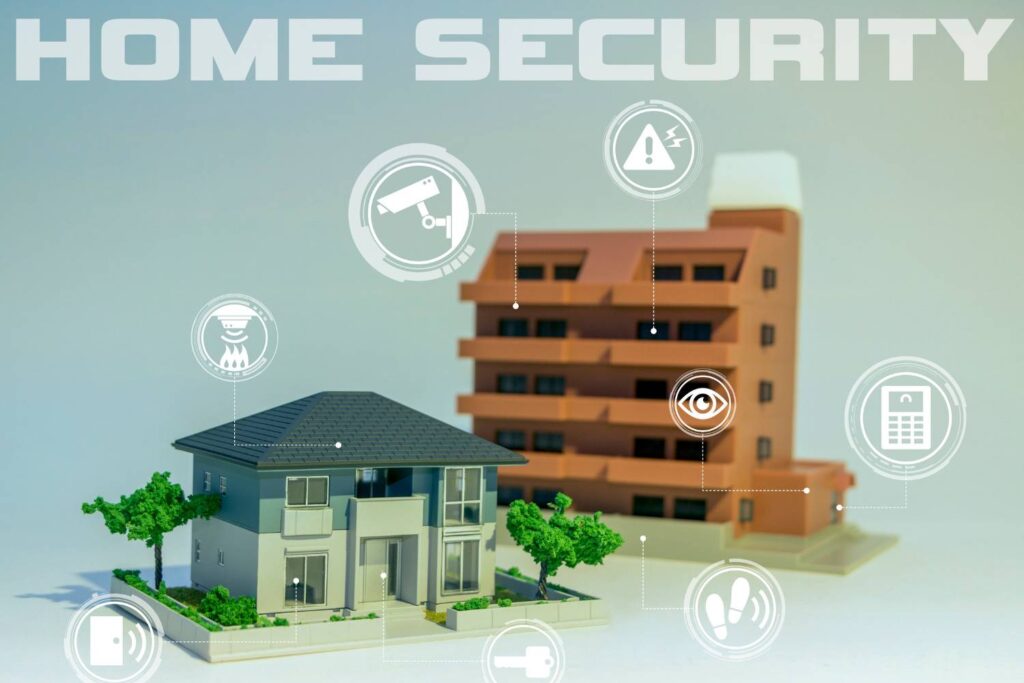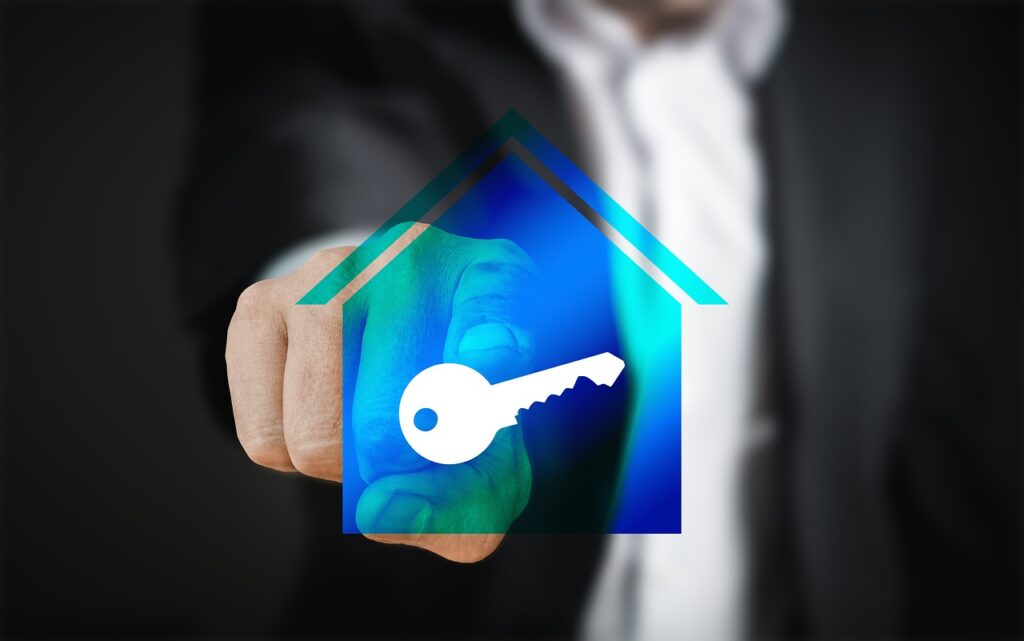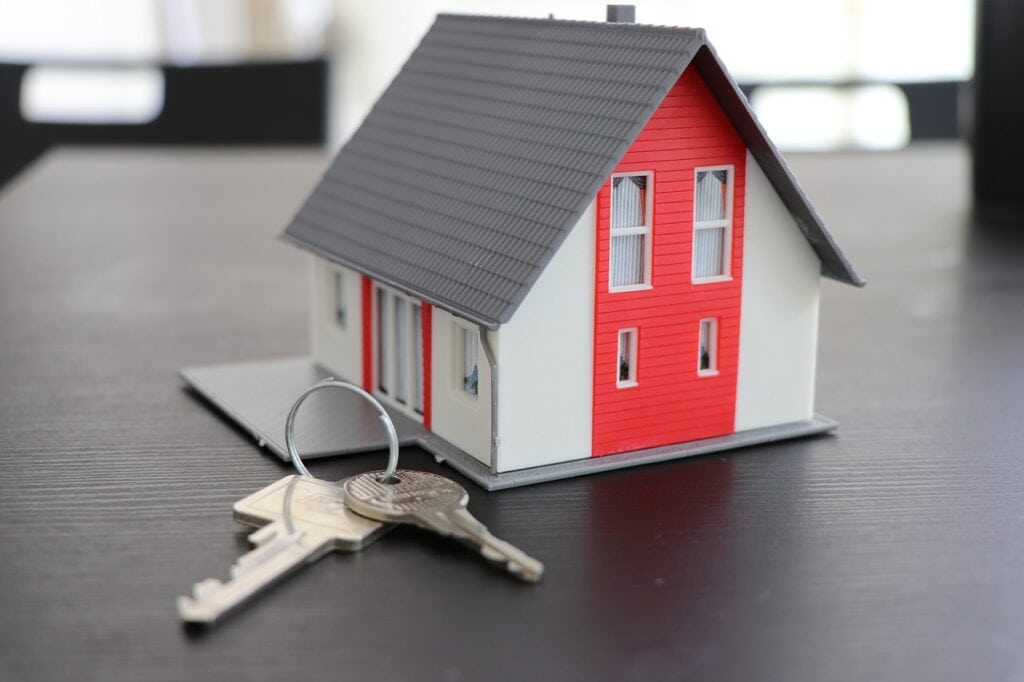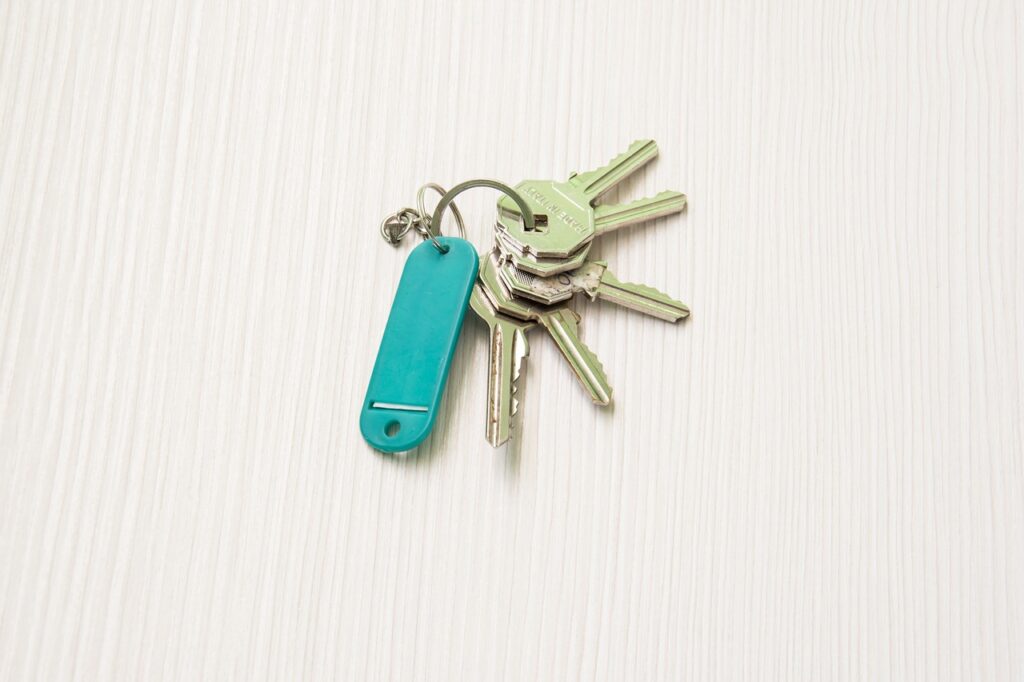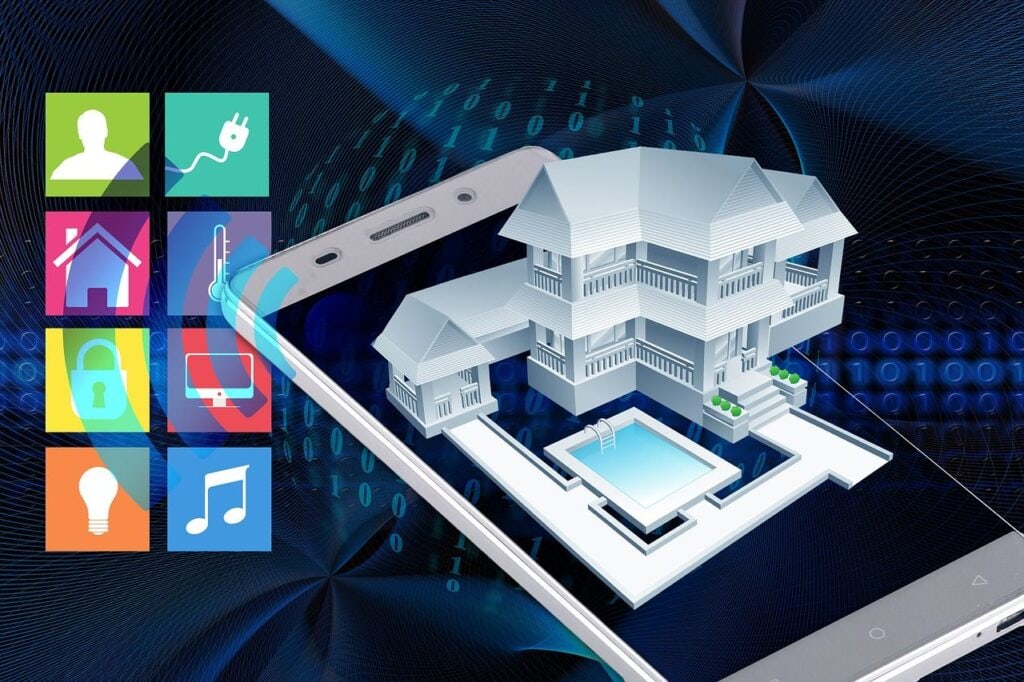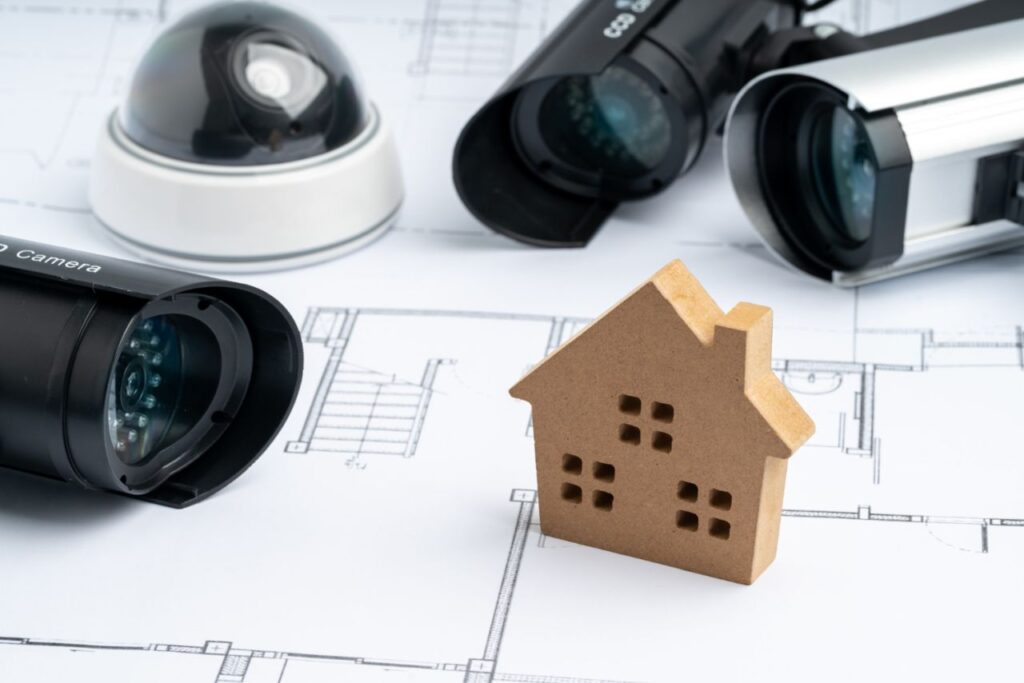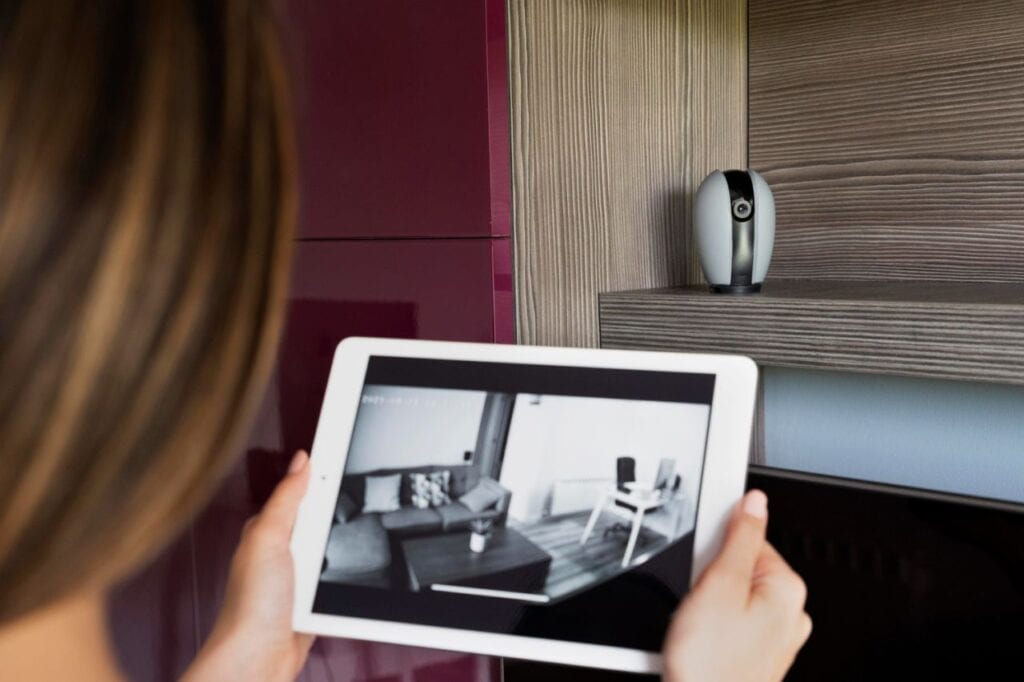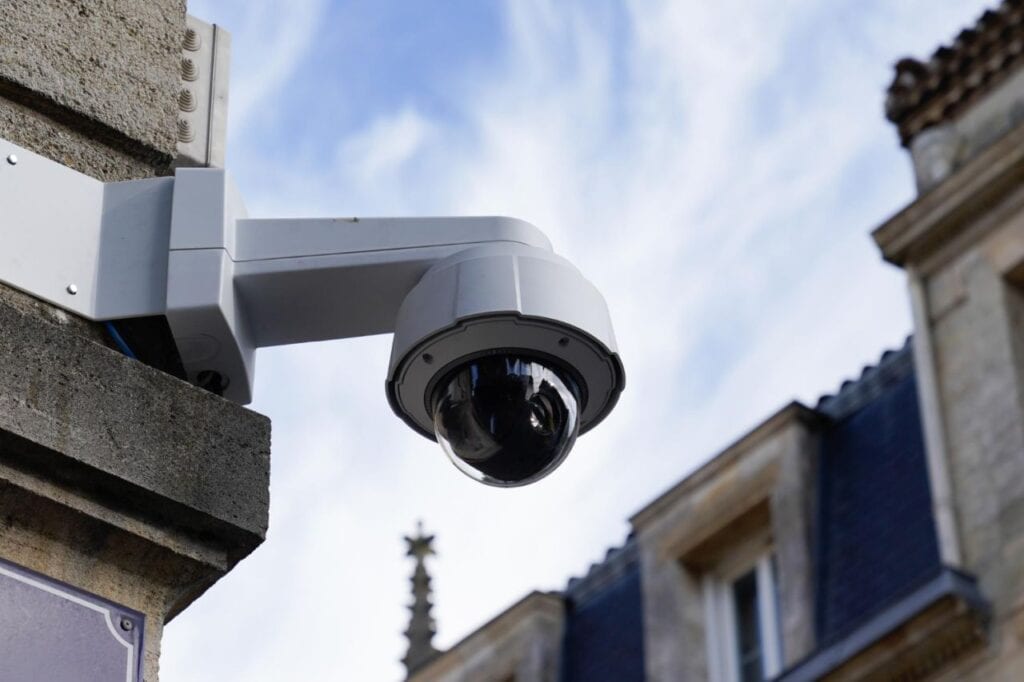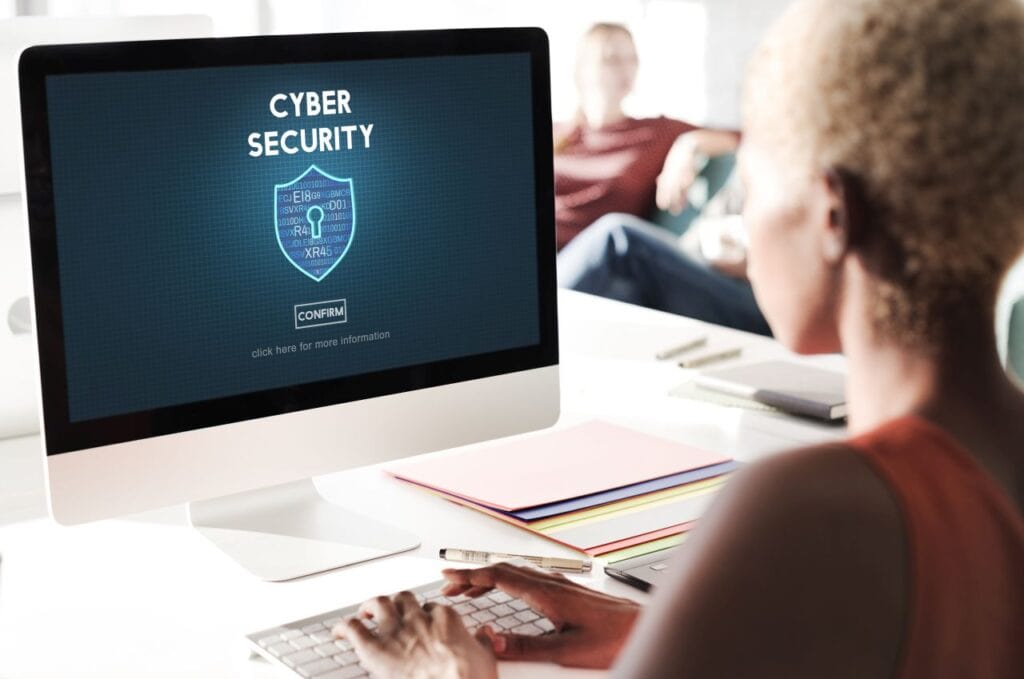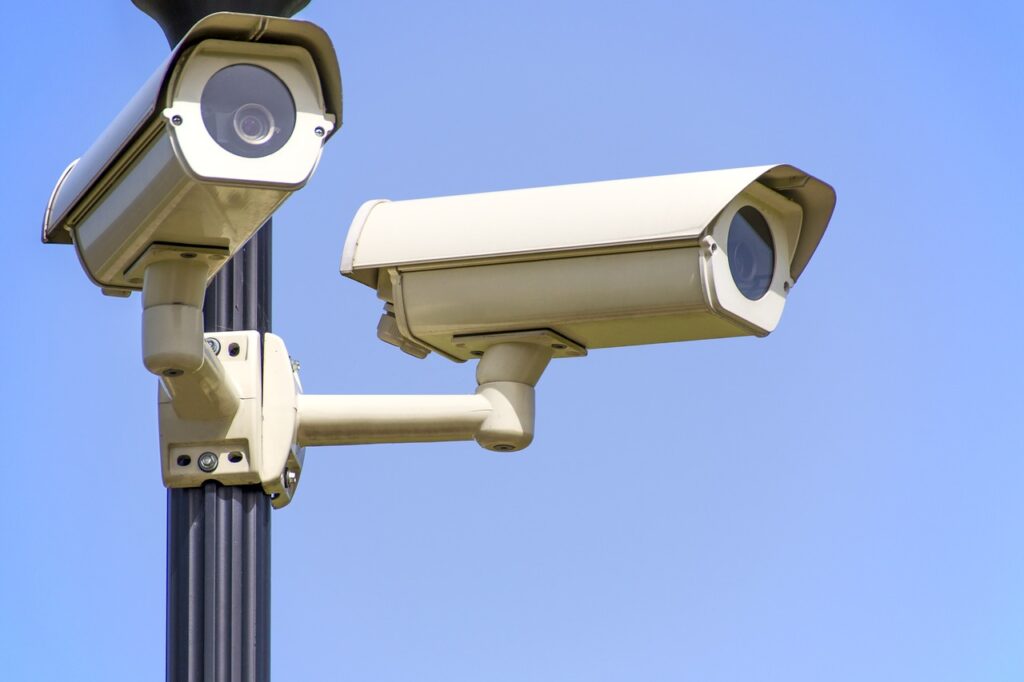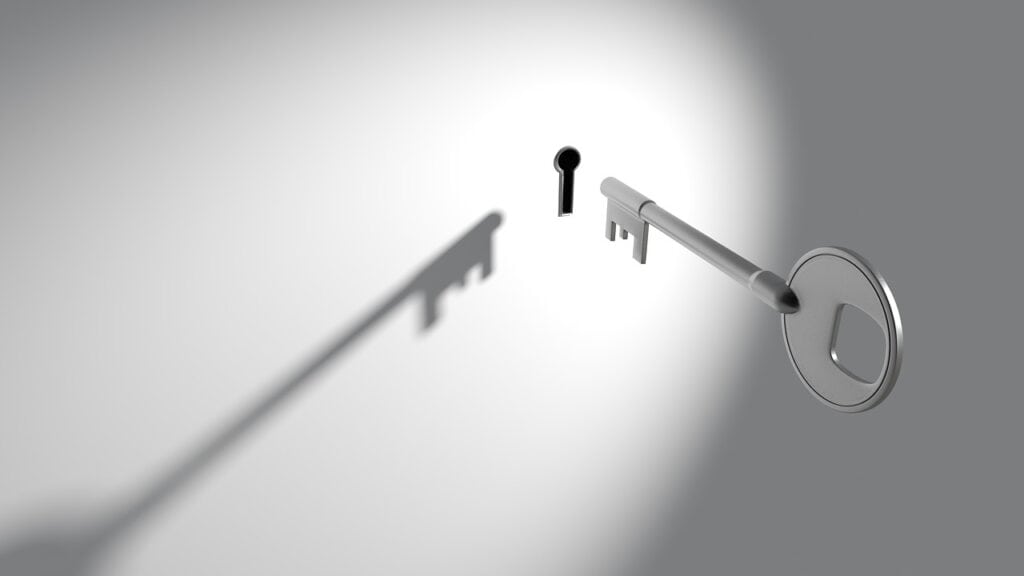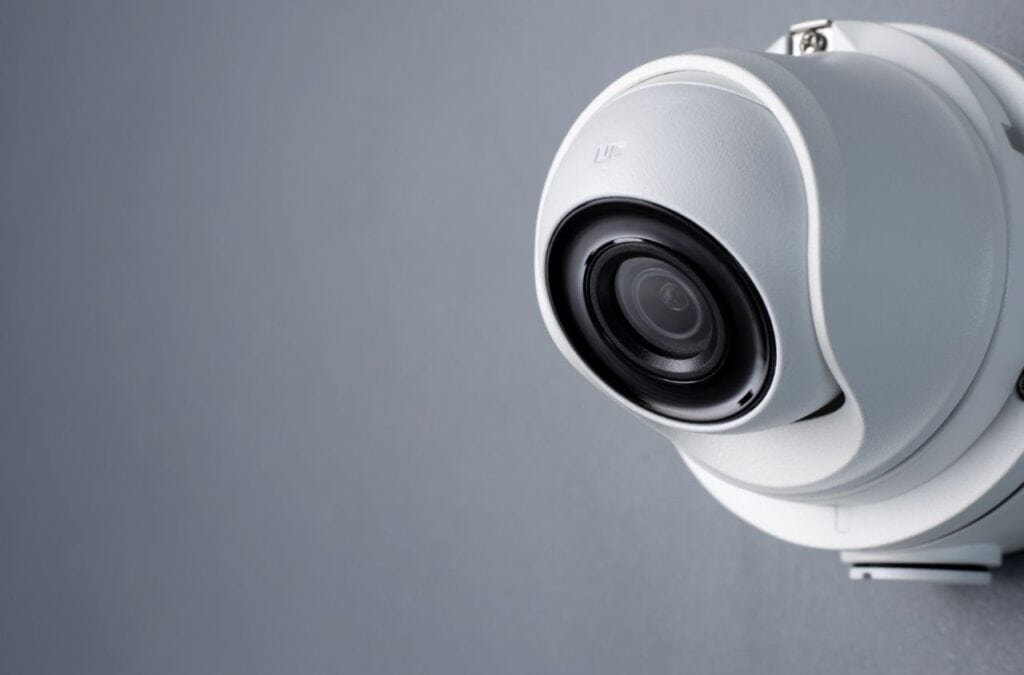A key feature of modern home security systems is customisation, which allows homeowners to tailor their protection solutions to their specific needs and preferences. The old "one size fits all" philosophy has been replaced by more sophisticated and individualised methods due to the proliferation of flexible security solutions. Homeowners can tailor a security system to their unique requirements and lifestyle preferences from among many different possibilities.
An integral aspect of customisation is selecting appropriate sensors and detectors. Homeowners can address specific security concerns by strategically placing various devices, such as door/window contacts, motion detectors, glass break detectors, and environmental sensors. Optional security cameras range from fixed-position to pan-tilt-zoom (PTZ) cameras, allowing for customisation based on coverage requirements and personal preferences.
Smart home integration allows consumers to connect their security systems to other smart devices, adding an extra layer of customisation. One example of a home automation ecosystem component that can be incorporated in this fashion are smart light switches, thermostats, and smart door locks. The ability to remotely control and keep tabs on these gadgets makes life easier and more secure.
You can also adjust the degree of surveillance to your liking. Homeowners can take their security to the next level by installing a professional monitoring service or by opting for self-monitoring, which gives them the freedom to get alerts and manage their system whenever and wherever they like. Customisable alert schedules, access levels, and notification settings enhance the customised security experience.
How to Customise Your Home Security System
Protecting our houses is a top priority for everyone. The reasons vary, ranging from safeguarding our loved ones to preserving our possessions to guaranteeing our personal space.
That's why tailoring a home security system to your unique requirements is crucial. These are a few typical approaches:
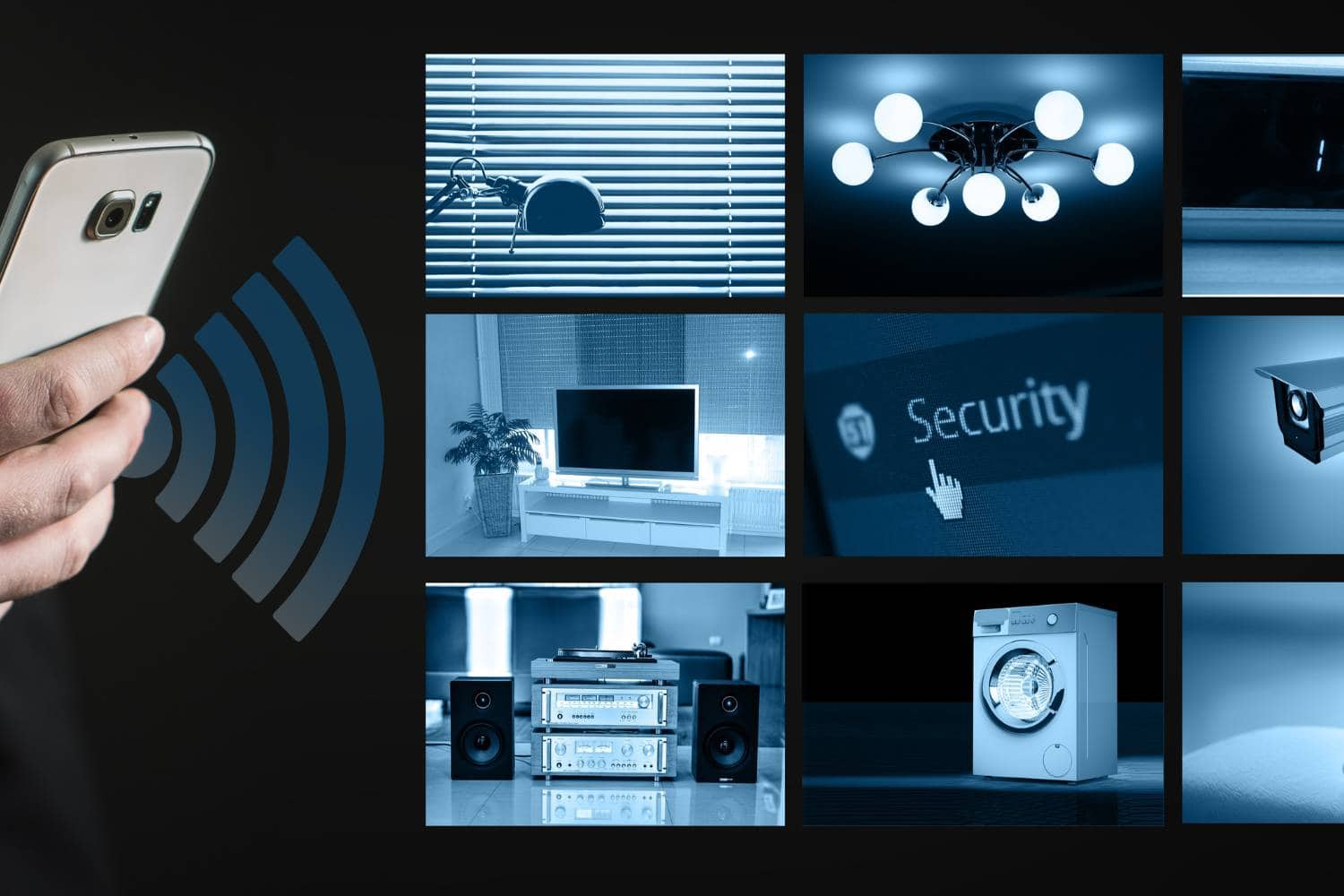
Security Around the Outside
Protecting your home's perimeter should be your top priority. Posting stickers and signage outside your home alerts would-be burglars that an alarm system is in place. Installing outside cameras allows you to monitor your home's exterior in real-time.
Another option is to set up sensors in strategic locations, such as your doors and windows, to notify you whenever someone attempts to enter your house through those points.
Internal Security
In order to ensure that an intruder cannot enter your home undetected if they manage to breach your first line of defence, it is recommended to construct a second line of defence within the premises.
Glass break sensors and motion detectors are the way to go for this. Glass break sensors will trigger an alert in the event that a window or door pane is shattered, while motion detectors will identify any movement within a room or hallway. For your peace of mind and convenience, you can equip your home with security cameras and extra keypads or panic buttons.
Safeguarding Assets
A lot of people want their home security systems to do double duty, protecting them against both burglars and thieves. Having adequate protection for costly possessions, such as pricey jewellery, is essential.
So, before you put any valuables in any cupboards, you might want to think about installing sensors. Any attempt by a would-be burglar to get access to them and take your possessions will trigger this alarm.
Environmental Defence
In order to keep your house safe from outside threats, your security system should have sensors. Detectors for smoke and carbon monoxide might sound an alarm, while sensors for low temperatures can warn you if water is freezing in your pipes.
Another measure you can take to safeguard your home from flooding is to install a flood detector in the basement or set up an alarm system to notify you when the water level in the basement or any other part of the house reaches a certain threshold.
Smart Home Devices
The convenience of your smartphone or tablet makes home automation systems a great way to manage your temperature, lighting, and other features from anywhere. These devices allow you to keep tabs on your home and neighbourhood even while you're not there.
When you're not there, you may use them to lock doors, adjust the thermostat, and turn lights on and off.
Benefits of Having a Home Security System
In the event of an emergency, everyone concerned about the safety of their house and family should investigate reputable security systems. By reducing the likelihood of house invasion and improving emergency response times, you can save money. You can tailor your security package to meet the specific demands of your family by adding additional features, which is a common practice.
What a Home Security System Can Do for You
We'll go over all the ways in which a home security system can improve your life and the lives of your loved ones.
Stops Burglaries
Home security systems defend your property in real-time by identifying and notifying you of any attempts at unauthorised entrance. You can keep an eye on every possible entry point by combining motion detectors, glass break sensors, door and window sensors, and more.
The security system will inform you and the security monitoring company through loud alarms in the case of an attempted break-in. Having these reaction times in place increases the likelihood of apprehension in the event of a break-in and serves to discourage would-be burglars.
The purpose of security systems is to discourage would-be intruders before the alarm goes off. If your property has signs posted to let would-be burglars know about your security system, they will think twice about breaking in. Instead, they will seek out easier, less protected targets. The automatic alarms will deter them if they persist in breaking in. Deterring break-ins and effectively scaring off attackers is possible with a visible security system.
It gets rid of false alarms.
Reducing or eliminating false alarms is a perk of smart home security systems. If you have a smart home, the most cutting-edge technology can keep an eye on your house and identify any dangers.
If someone is in the area or if an access point is opened, a smart system will notify you. You can check if there's really been a break-in by remotely monitoring the situation once you receive the warning. If it's just a false alarm, you'll know to reset the security system. But if it's really a break-in, you'll be able to call for help right away.
Safeguards Family Members
Your family's safety is the first priority with a smart home security system, even more so than the protection of your property. Incorporated into the security system are smoke and carbon monoxide detectors, which may swiftly identify possible gas or fire dangers. Remote home monitoring and faster reaction times in the event of an emergency are both made easier with more interconnected safety systems.
The medical alert buttons or pendants that come with many home security systems also make it easier for loved ones to summon assistance in the event of an emergency. Keep your loved ones safe and keep an eye on the house with medical alert accessories or a smart home security system.
Allows for Simple Oversight and Management
Thanks to the features of modern home security systems, homeowners can keep an eye on their properties from anywhere thanks to remote monitoring and surveillance. You may remotely manage your security system, view live video feeds, and receive warnings through smartphone apps and web portals. Having this much control and visibility gives you piece of mind, especially when you're not at home for a long time.
Works Effortlessly with Home Automation Systems
Modern home automation systems are now able to work in tandem with security systems. A smart and convenient house may be yours when you integrate home automation with security features. An example of a security system that can improve energy economy and convenience is one that can lock doors, regulate the thermostat, and turn on and off lights automatically depending on your schedule or presence.
A more networked house allows you to manage critical systems from anywhere, even on vacation, and tailor them to your own requirements. With your home automation and security systems accessible through a single app, you can live a more convenient life.
It May Reduce Insurance Premiums
Homeowners insurance costs can be significantly reduced with the installation of a home security system. Reduced chance of break-ins and property damage leads to decreased insurance claims, which is why many insurance firms give discounts to policyholders with security systems. You can gradually recoup some of the cost of a home security system through these savings.
With smart, integrated home energy and security systems, you can save a tonne of money and cut down on your energy usage. Modern technology, such as smart thermostats and home security systems, can save you a lot of time, energy, and money if you spend a little extra now.
Offers Video Proof
Video capturing is one of the main advantages of home security cameras. Having video surveillance footage can be incredibly helpful for law enforcement and insurance claims in the case of a break-in or other security incident.
Any occurrences on your property can be easily documented with the use of security cameras, which record events and actions in real-time. Video footage captured by your security cameras can aid in determining who was at fault, speeding up the claims process, and easing investigations.
In addition, you can remotely monitor your house with footage from your cameras. With improved home security and control, you can do everything from monitoring alerts and dropping off deliveries to welcoming the pet sitter and offering recorded evidence.
Allows For Control And Access From Afar
Apps for smartphones or online portals allow for remote access and operation of modern home security systems. Homeowners can easily activate or disarm the system, receive real-time notifications, and control smart devices from any internet-connected location with this convenient remote access.
Having remote access to your system allows you to keep an eye on things and make adjustments whenever you need to, regardless of where you are.
Make The Best Home Alarm System For Your Requirements
A well-planned strategy that incorporates thorough evaluation and educated decision-making is required to design the perfect home alarm system adapted to your requirements. Your home can be best protected and your mind at ease with a tailor-made security system that you create after carefully assessing its weak spots and choosing the appropriate components.
Figure Out What Kind of Security You Need
The best way to figure out what kind of home security system you need is to research the options available on the market. Before deciding on a security system—which can range from wired to wireless—it is important to assess your property for potential weak points and entrance locations.
Think about things like your way of life, the worth of your belongings, and the crime rate in the area. After reading this, you should have a better idea of whether you need a full-scale alarm system, outside cameras, motion detectors, or some mix of these. Building a strong home security system that gives you peace of mind requires knowledge of the various security solutions and how to match them to your unique situation.
Think about the many security systems available.
To make sure your home is as safe as possible, it is important to choose the correct security system. Depending on your unique requirements, you can choose from a variety of systems that provide different degrees of detection and response. The installation expenses of different systems should also be taken into account.
These are a few well-liked choices:
Home security systems that are linked to a professional monitoring service allow them to keep an eye on your property at all times. The monitoring centre is notified whenever an alarm is activated, allowing them to call for emergency assistance if necessary. Although this system provides a high degree of protection, it usually requires payment on a regular basis for monitoring.
When a sensor goes off, an unmonitored security system will send out an alert or notification but will not communicate with a central monitoring station. Rather, they count on you or the people you know to answer to notifications. They're less expensive overall, but you have to be involved in handling emergencies with them.
Wireless Systems: Installation is made easier and more versatile with wireless home security systems since they employ wireless technology for device connection. Cameras, sensors, and alarms are common features that allow for remote control and monitoring via a smartphone app.
Take Stock of Your Home's Entrances and Floor Plans
If you want to personalise your home security system, knowing your home's layout is essential for placing security devices strategically and making the most of them. You can better secure your property by familiarising yourself with its layout, since different parts may be more or less susceptible depending on their location.
The best way to install security cameras, motion detectors, and alarms is to draw a plan of the building's layout, including all of the doors, windows, and interior areas. By taking this individualised approach, you can rest assured that your home security measures will be perfectly adapted to its specific layout, increasing both coverage and safety.
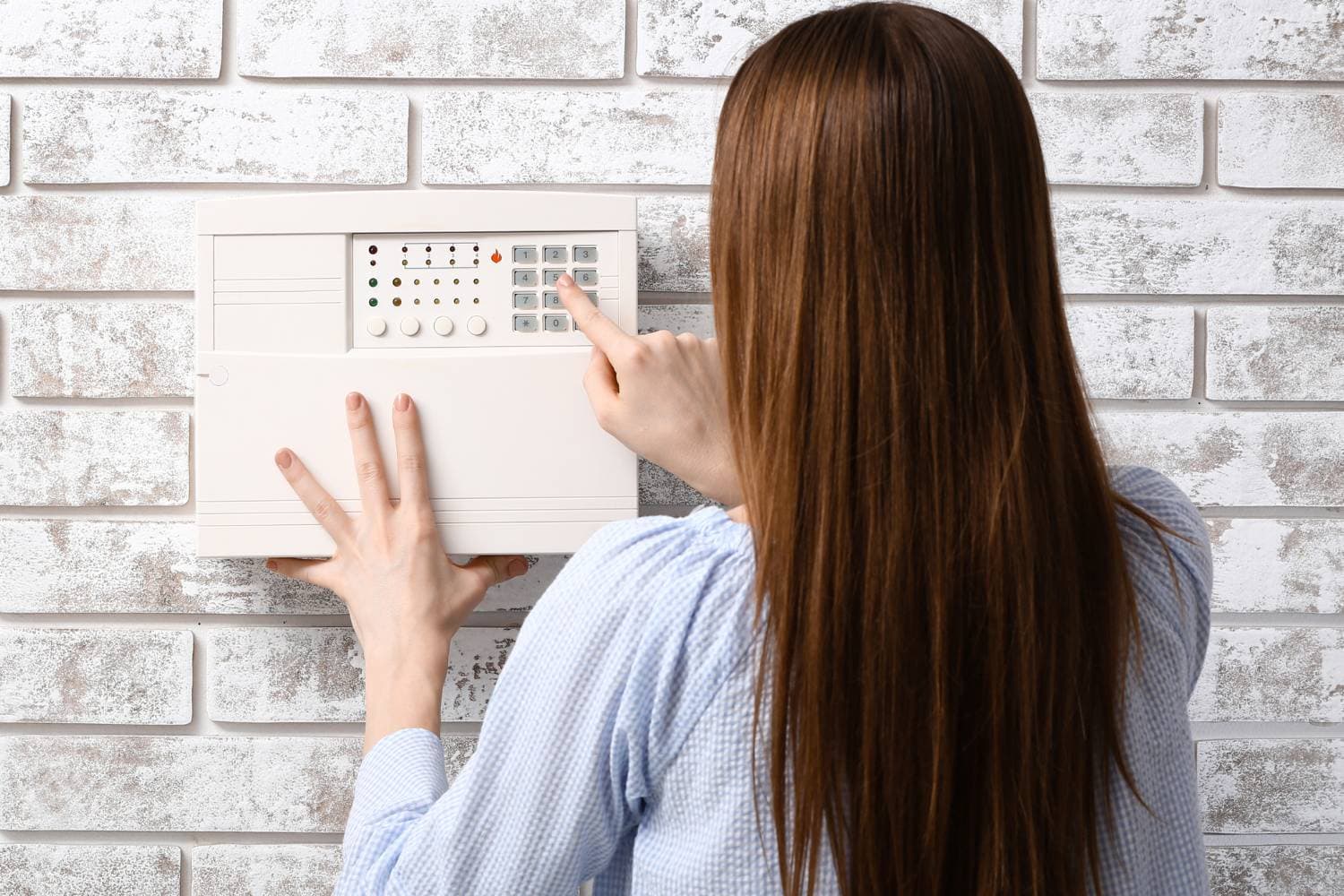
Discover the Options for Personalising Your Alarm System
Having the option to add features beyond basic security is a major advantage of a personalised alarm system. There is a limitless array of possibilities, ranging from the integration of smart home devices to high-tech tools like motion detectors and video security cameras. Some supplementary features that offer an additional degree of security are as follows:
With a smart door lock, you can control the lock and unlock from your phone or tablet. You may also set up notifications to let you know when someone comes or goes from your house using this smart technology.
With smart lighting, you may prevent would-be burglars by programming the lights to turn on and off at certain intervals, much like an alarm system.
Alarms and warnings can be provided in the event of a fire or harmful gas leak by integrating smoke detectors and carbon monoxide detectors into your security system.
The installation of glass break sensors provides an additional line of defence against break-ins by alerting the security system whenever they detect the sound of breaking glass.
Water leak or flood detectors can notify you of possible water damage problems.
In the event of an emergency, you can swiftly notify the proper authorities by installing panic buttons in designated areas, such as bedrooms.
Communicate with guests or ward off would-be burglars from afar using the two-way talk feature available on some security systems' control panels or cameras.
Select a Trustworthy Security Service?
When designing your home security system, it is critical to work with a trustworthy security firm that has extensive experience in the industry. They provide expert installation services and check that all parts, including wireless devices, motion detectors, and window sensors, are set up correctly.
Reputable providers also make sure their products work with smart home devices, so you can control them from anywhere with services like Google Home and Amazon Alexa.
Quick responses to problems are guaranteed by their expert monitoring plans and cellular connections, which reduces risks, potential insurance costs, and increases your safety. In addition, well-known brands provide cutting-edge capabilities including exterior cameras, video doorbells, and full-house security systems. Trusted professionals are your best bet for a thorough, dependable, and efficient home security system.
Conclusion
Modern home security systems offer customization, allowing homeowners to customize their protection solutions to their specific needs and preferences. This includes selecting appropriate sensors and detectors, such as door/window contacts, motion detectors, glass break detectors, and environmental sensors. Smart home integration allows for remote control of smart devices like light switches, thermostats, and door locks.
Customizable alert schedules, access levels, and notification settings enhance the security experience. Home security systems can protect the perimeter, internal security, assets, environmental defense, and smart home devices. Customisation also provides benefits such as reduced likelihood of house invasion and improved emergency response times, saving money. By incorporating these features, homeowners can enhance their security experience and reclaim control over their home.
Home security systems are designed to deter burglars, eliminate false alarms, and protect family members. They use motion detectors, glass break sensors, and other sensors to monitor entry points and alert homeowners of potential threats. Smart systems also eliminate false alarms, allowing for remote monitoring and faster response times.
They also work seamlessly with home automation systems, allowing homeowners to manage their systems from anywhere. Integrating security features with home automation can improve energy efficiency and convenience. Security systems can also reduce insurance premiums by reducing the chance of break-ins and property damage.
Video surveillance footage from security cameras can be used for law enforcement and insurance claims. Remote access to the system allows for easy control and adjustment from any internet-connected location.
To create a tailored home alarm system, research available options, assess your property for potential weaknesses, and consider factors like your lifestyle, belongings, and crime rate. Consider professional monitoring services, unmonitored systems, and wireless systems.
Know your home's layout to strategically place security devices. Personalize your alarm system with features like smart home devices, motion detectors, and video cameras. Add features like smart door locks, smart lighting, smoke detectors, glass break sensors, water leak detectors, panic buttons, and two-way talk features.
Choose a trustworthy security firm with extensive experience in the industry, ensuring expert installation services and compatibility with smart home devices. Trusted professionals offer cutting-edge capabilities, such as exterior cameras and video doorbells, ensuring a thorough, dependable, and efficient home security system.
Content Summary:
- Modern home security systems offer customization, allowing homeowners to tailor their protection solutions to their specific needs and preferences.
- Sensors and detectors are integral to customization, with options including door/window contacts, motion detectors, glass break detectors, and environmental sensors.
- Smart home integration allows for connection of security systems to other smart devices, such as smart light switches, thermostats, and smart door locks.
- The degree of surveillance can be adjusted to suit the homeowner's preferences, with options for professional monitoring or self-monitoring.
- Customisable alert schedules, access levels, and notification settings enhance the customised security experience.
- Security Around the Outside: Posting stickers and signage outside the home, installing outside cameras, and setting up sensors in strategic locations can alert burglars.
- Internal Security: Building a second line of defense within the premises with glass break sensors and motion detectors can prevent intruders from entering undetected.
- Safeguarding Assets: Installing sensors can protect valuables like expensive jewelry from burglars.
- Environmental Defence: Having sensors for smoke and carbon monoxide, low temperatures, and flooding can keep the house safe from outside threats.
- Smart Home Devices: Smartphones or tablets can manage temperature, lighting, and other features remotely, allowing for remote control of home and neighborhood.
- In the event of an emergency, reputable security systems can reduce the likelihood of house invasion and improve emergency response times.
- CuCustomisinghe security package to meet the specific demands of the family can save money.
- Stops Burglaries: Real-time security systems detect and notify of any attempts at unauthorised entry, increasing the likelihood of apprehension and deterring burglars.
- Eliminates False Alarms: Smart systems use advanced technology to monitor the house and identify potential threats, reducing false alarms and allowing for immediate response to break-ins.
- Safeguards Family Members: Smoke and carbon monoxide detectors in the system can quickly identify potential gas or fire dangers. Remote home monitoring and faster response times are made easier with interconnected safety systems.
- Allows for Simple Oversight and Management: Modern home security systems allow homeowners to remotely manage their security system, view live video feeds, and receive warnings through smartphone apps and web portals.
- Works Effortlessly with Home Automation Systems: Modern home automation systems can work seamlessly with security systems, improving energy efficiency and convenience.
- May Reduce Insurance Premiums: Installation of a home security system can significantly reduce homeowners' insurance costs due to reduced chances of break-ins and property damage.
- Offers Video Proof: Home security cameras record events and actions in real-time, aiding in law enforcement and insurance claims.
- Allows For Control And Access From Afar: Remote access to the system allows homeowners to easily activate or disarm the system, receive real-time notifications, and control smart devices from any internet-connected location.
- Research available security systems and assess your property for potential weak points and entrance locations.
- Consider factors like lifestyle, property value, crime rate, and crime rate.
- Determine if you need a full-scale alarm system, outside cameras, motion detectors, or a mix of these.
- Consider the different security systems available, including professional monitoring services, unmonitored systems, and wireless systems.
- Consider installation costs and the degree of detection and response.
- Familiarise yourself with your home's layout to strategically place security devices.
- Draw a plan of the building's layout for installation of security cameras, motion detectors, and alarms.
- Add features beyond basic security, such as integration of smart home devices and high-tech tools like motion detectors and video security cameras.
- Add features like smart door lock, smart lighting, smoke detectors and carbon monoxide detectors, glass break sensors, water leak or flood detectors, panic buttons in designated areas, and two-way talk feature on some security systems' control panels or cameras.
- Work with a security firm with extensive industry experience.
- Ensure all parts are set up correctly and work with smart home devices.
- Ensure quick responses to problems through expert monitoring plans and cellular connections.
- Choose brands with cutting-edge capabilities like exterior cameras, video doorbells, and full-house security systems.
Frequently Asked Questions
The control panel of your security system is a critical component. Prevent unauthorized access by placing it in a secure and discreet location. If your system uses passcodes or PINs, regularly update them and avoid using easily guessable combinations. Educate household members on the importance of keeping access credentials confidential.
Many modern security systems support voice control through virtual assistants like Amazon Alexa or Google Assistant. This allows you to arm or disarm your system, check the status, and perform other functions using voice commands. Ensure that your system is compatible with your preferred virtual assistant for added convenience.
Package theft is a common concern. Enhance your security by positioning cameras to monitor package delivery areas. Install smart doorbell cameras that provide real-time alerts and two-way communication. Consider using secure package drop-off locations or delivery lockers. Additionally, collaborate with neighbors to keep an eye on each other's packages.
Some security systems offer features like "disarmed alerts" that notify you of unusual activity even when the system is not armed. This can include unexpected door openings or motion detected during specific hours. Check if your system provides customizable alert settings for added awareness and security during both armed and disarmed states.
Regularly updating the software and firmware of your security system is crucial to address potential software vulnerabilities. Choose systems from reputable manufacturers that prioritize security updates. Stay informed about any security patches or updates released by the manufacturer and apply them promptly to protect against potential exploits.


